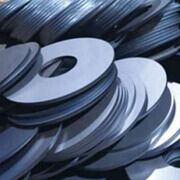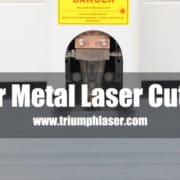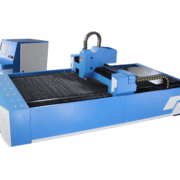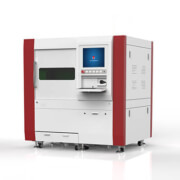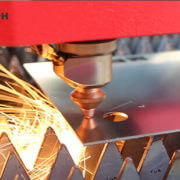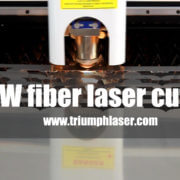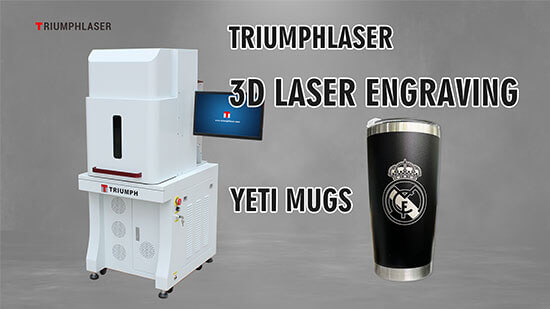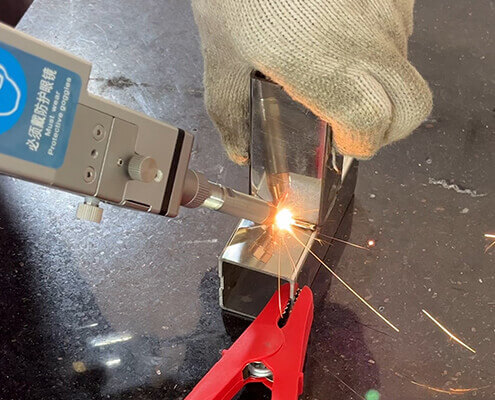Analysis of Oxygen and Nitrogen Consumption in Fiber Laser Cutting Machines
In general, laser cutting typically requires the use of oxygen or nitrogen as assist gases. Occasionally, high-pressure air can also be used as an assist gas.
Auxiliary gas tanks, such as oxygen and nitrogen, are often used in laser cutting machines. The specific gases required and their consumption rates can vary depending on the type of laser cutter and the materials being processed.
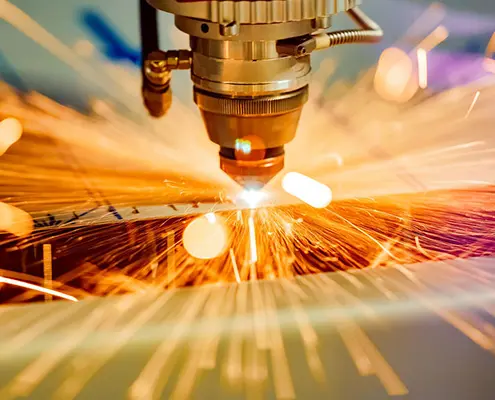
The assist gas is typically delivered through the nozzle along with the laser beam, and it blows out onto the material being cut. The force and flow rate of the gas can be adjusted to optimize the cutting process for different material thicknesses and types.
1.When laser cutting stainless steel, nitrogen is the preferred choice as the assist gas.
Nitrogen is another gas used in laser cutting, often for cutting non-ferrous metals like aluminum or stainless steel. The assist gas is blown onto the cutting zone to remove molten metal and debris from the cut, helping to improve the cutting quality and efficiency.Nitrogen helps prevent oxidation and produces a cleaner cut edge. The consumption rate of nitrogen can also vary depending on similar factors like material thickness, laser power, and cutting speed.
In China,one bottle of Nitrogen is 18$ /bottle.
Standard oxygen or nitrogen gas bottle is 40L/bottle.
The thicker of the stainless steel, the higher Nitrogen pressure we need.
| Material | Thickness | Air consumption |
| Stainless Steel | 1mm | 40L/80minutes |
| Stainless Steel | 2mm | 40L/40minutes |
| Stainless Steel | 3mm | 40L/30minutes |
| Stainless Steel | 4mm | 40L/30minutes |
| Stainless Steel | 6mm | 40L/30minutes |
| Stainless Steel | 8mm | 40L/30minutes |
Oxygen is commonly used as an assist gas in laser cutting to enhance the cutting process for materials such as steel. It reacts with the molten metal to facilitate the cutting process. The consumption rate of oxygen can vary depending on factors such as the thickness of the material being cut, the power of the laser, and the cutting speed.
In China,one bottle of Nitrogen is 10$ /bottle.
Standard oxygen or nitrogen gas bottle is 40L/bottle.
For carbon steel cutting, the thicker, the less Oxygen pressure need.
| Material | Thickness | Air consumption |
| Carbon Steel | 1mm | 40L/40minutes |
| Carbon Steel | 2mm | 40L/50minutes |
| Carbon Steel | 3mm | 40L/60minutes |
| Carbon Steel | 4mm | 40L/70minutes |
| Carbon Steel | 6mm | 40L/80minutes |
| Carbon Steel | 8mm | 40L/90minutes |
| Carbon Steel | 10mm | 40L/110minutes |
| Carbon Steel | 12mm | 40L/180minutes |
| Carbon Steel | 14mm | 40L/200minutes |
| Carbon Steel | 16mm | 40L/220minutes |
| Carbon Steel | 20mm | 40L/220minutes |
The choice between using compressed air or nitrogen as the assist gas depends on several factors, including the specific requirements of the cutting process and the desired outcome. Compressed air is a more economical option compared to nitrogen, but it may result in some oxidation of the stainless steel during the cutting process. Nitrogen, on the other hand, provides a cleaner cut edge by minimizing oxidation.
There is typically a requirement for air pressure when using compressed air as an assist gas in laser cutting. The specific air pressure required can vary depending on the laser cutting machine, the material being cut, and the desired cutting quality.
Blowing air without sufficient pressure may not provide the necessary force to effectively remove molten metal and debris from the cutting zone. This can result in reduced cutting quality, increased slag formation, and decreased cutting speed. It may also lead to issues such as burrs or dross on the cut edges.
When using compressed air from a compressor, it is important to ensure that the compressed air pressure is at least 13 bar. Here are some things to keep in mind:
- Firstly, ensure that your air cylinder has sufficient air. Typically, an air tank with a height of 1.8m should be sufficient.
- Secondly, the compressed air from the compressor must be dry and clean, without any water or dust.
- Thirdly, the use of a dryer and filters is also necessary.
If you are considering using compressed air as an assist gas for laser cutting, it is advisable to consult the equipment manufacturer or supplier for the specific air pressure requirements for your laser cutter model and the materials you intend to cut.
This is selina from triumphlaser If you want to learn more about laser welding machine, please don’t hesitate to contact with me.
Email:selina@triumphlaser.com

